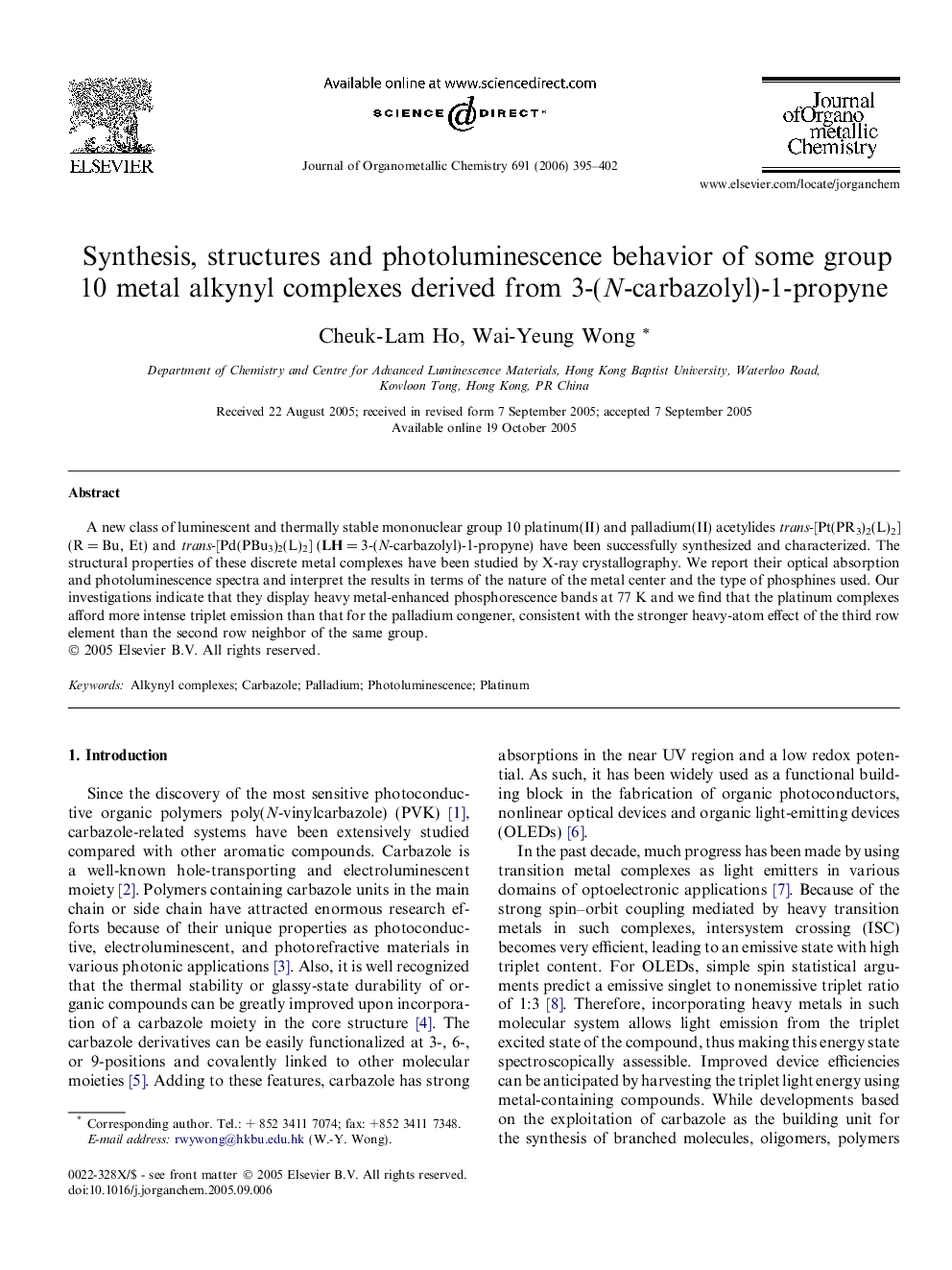| کد مقاله | کد نشریه | سال انتشار | مقاله انگلیسی | نسخه تمام متن |
|---|---|---|---|---|
| 1325938 | 977411 | 2006 | 8 صفحه PDF | دانلود رایگان |

A new class of luminescent and thermally stable mononuclear group 10 platinum(II) and palladium(II) acetylides trans-[Pt(PR3)2(L)2] (R = Bu, Et) and trans-[Pd(PBu3)2(L)2] (LH = 3-(N-carbazolyl)-1-propyne) have been successfully synthesized and characterized. The structural properties of these discrete metal complexes have been studied by X-ray crystallography. We report their optical absorption and photoluminescence spectra and interpret the results in terms of the nature of the metal center and the type of phosphines used. Our investigations indicate that they display heavy metal-enhanced phosphorescence bands at 77 K and we find that the platinum complexes afford more intense triplet emission than that for the palladium congener, consistent with the stronger heavy-atom effect of the third row element than the second row neighbor of the same group.
A new class of luminescent mononuclear metal complexes of platinum and palladium containing 3-(N-carbazolyl)-1-propyne ligands are prepared and characterized. The influence of metal center and its auxiliary groups on the photophysical properties of the carbazole-based organometallic compounds is characterized in detail.Figure optionsDownload as PowerPoint slide
Journal: Journal of Organometallic Chemistry - Volume 691, Issue 3, 15 January 2006, Pages 395–402